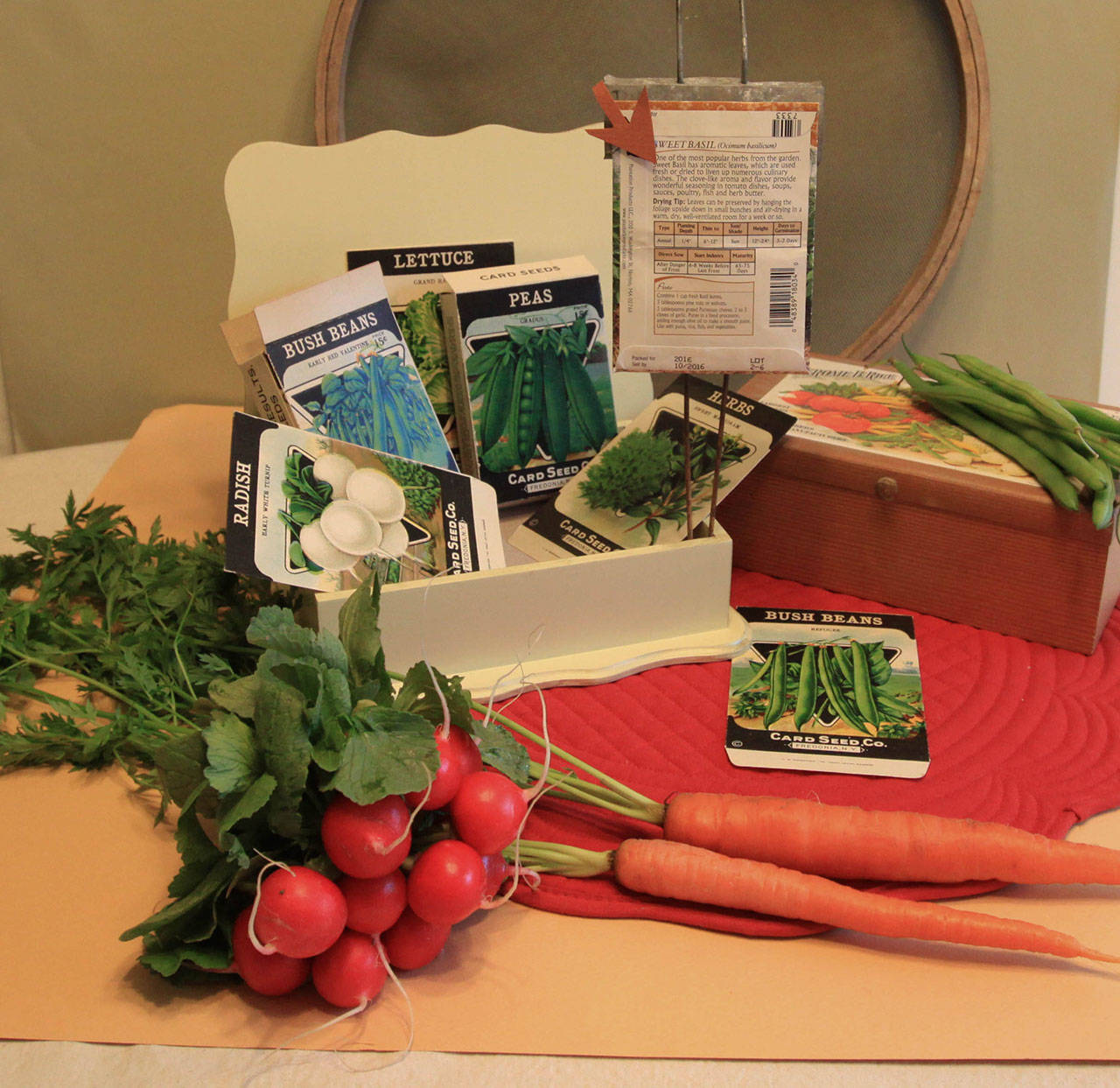There’s something almost magical in planting a tiny seed and watching it transform into a plant with broad green leaves, magnificent flowers and delicious fruit. January is a perfect time to select seeds and start planning a magical spring garden.
First, evaluate your climate and garden site. Knowledge of climate zone, first/last frosts and length of growing season is important and easily found in online resources (see sidebar for some useful websites). Lower elevations on the Olympic Peninsula are USDA plant hardiness zone 8b with a fairly short and cool growing season making warm season crops difficult but not impossible.
Next, examine your available garden space. Most crops will require at least six hours of sun and good, loamy soil. Plan your layout so warmer season crops have the sunniest spot. It’s fun to plant some climbers but make sure you can provide adequate support.
With that information in hand, the fun begins. Seed packets or seed catalogs are the best tools in choosing plant varieties. These will provide invaluable information for planning your garden space including guidelines about starting seeds indoors/outdoors, planting, spacing, germination, days to maturity and other growing tips. There are so many great choices but be sure to choose varieties with shorter days to maturity.
When possible, starting seeds indoors and transplanting to the garden when the time is right has many advantages. Some crops such as tomatoes, peppers and eggplant have long growing seasons but need to be planted outdoors after the soil has warmed. Indoor sowing is essential for lengthening the growing season.
For starting seeds indoors you will need clean trays/containers, a lightweight, well-drained seed starting soil and planting labels. A heat mat and grow light would be bonuses but not necessary if a sunny, warm spot is available. Sow seeds according to the package directions one to three months before the last frost date so they are well established before transplanting.
Label with date and variety for future reference and provide as much sun and warmth as possible, rotating if needed. Keep the soil evenly moist but not soggy. This may require daily attention.
Once it is near the time to plant starts in your garden, place them outdoors for several hours a day for several days and bring them in at night to harden them off and thereby avoiding transplant shock. Transplant shock can result from many stresses including drastic change in temperature, sun scorch and disturbed roots. When transplanting, be gentle with plant roots to avoid damaging the tiny root hairs necessary for taking in water and minerals from the soil.
While most crops can be successfully started indoors, some prefer to be direct planted into the garden as they tend to suffer more from transplant shock. Those include most root crops such as beets, carrots and radishes. Other crops such as spinach, lettuce and kale lend themselves to direct sowing in successive plantings for a continuous harvest.
Read the package directions to thin and space plants as needed. Like indoor planting, the seeds should be kept moist but not soggy.
Finally, keep good records for future reference including planting dates, variety, seed source, germination time, first harvest and more. Just like planting seeds, this information will reap many benefits in the future.
Cindy Ericksen, a Clallam County Master Gardener since 2006, has years of gardening experience. She is an avid vegetable grower and annually contributes vegetable starts to the annual Master Gardener plant sale.
Growing season resources
USDA Plant Hardiness Zones: planthardiness.ars.usda.gov
Soil testing, Clallam County Conservation District: clallamcd.org
Home vegetable gardening in Washington state: pubs.extension.wsu.edu, search “EM057E”
Growing tomatoes in home gardens: pubs.extension.wsu.edu, search “FS145E”
Starting seeds
Mark your calendar, as Master Gardener Cindy Ericksen presents a free program on “Starting Seeds,” part of the Green Thumb Garden Tips education series at noon on Thursday, Jan. 23 — held in the commissioners’ meeting room at the Clallam County Courthouse, 223 E. Fourth St., Port Angeles.


